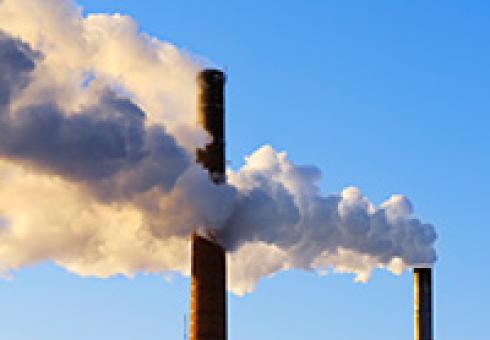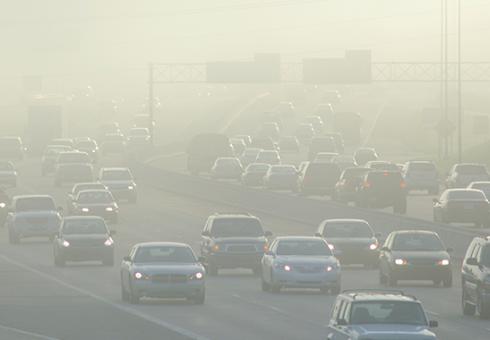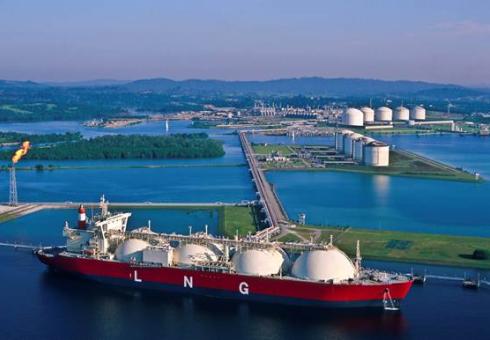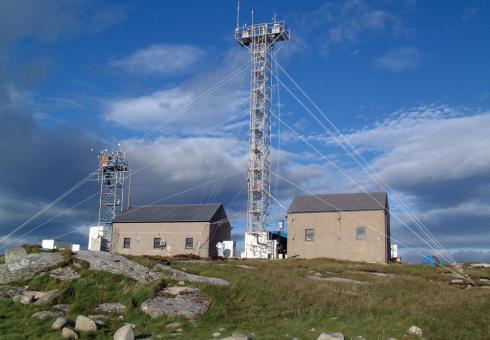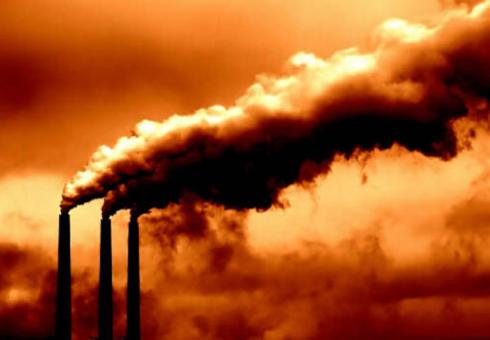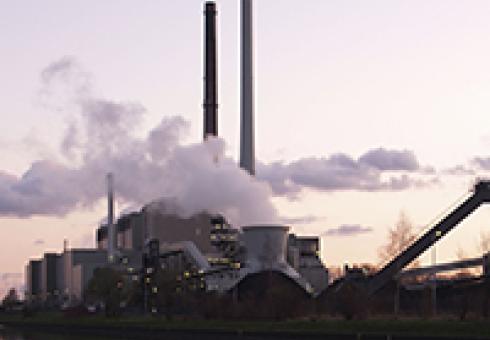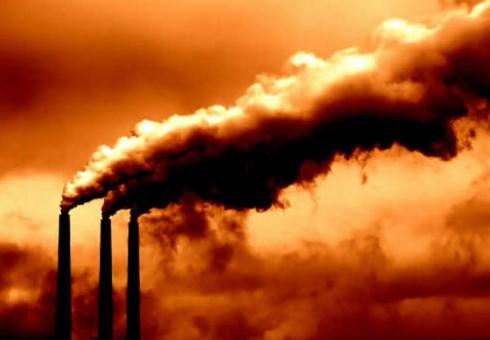News Releases
Alli Gold Roberts
MIT Joint Program on the Science and Policy of Global Change
Earlier this year, China took a major step in combating climate change by launching a pilot CO2 emissions trading system within some of its provinces. This is the first step in a series of planned reforms and part of a larger effort to reduce CO2 intensity by 17% in 2015, relative to 2010 levels. 
In a study coming out tomorrow in the November issue of Energy Economics, a group of researchers from MIT and Tsinghua University test the efficiency and equity of the provincial approach by comparing it to a national carbon-trading program. They find that while China can achieve its reduction goal with either a provincial or national level trading system, the national system encourages reductions where they cost the least—resulting in less welfare loss.
“Leaders in China want environmental protection measures to be fair to all regions and households. They also want to choose policies that will be the most cost effective,” says Da Zhang, the lead author of the study and a PhD student with Tsinghua University. “We hope that our research will help policymakers understand the distribution of the burden of alternative policy options, and help them to determine the most cost effective method of reducing CO2.”
Zhang and his coauthors are part of the Tsinghua-MIT China Energy and Climate Project, a collaborative effort between the MIT Joint Program on the Science and Policy of Global Change and the Institute for Energy, Environment and Economy at Tsinghua University in Beijing, China.
The international team finds that imposing CO2 targets at the provincial level results in a consumption loss that is about 20 percent greater than if targets are achieved through a national system. Zhang explains that this is because in a provincial level system, industries may miss out on low-cost opportunities in other provinces and be forced to invest in more expensive abatement measures.
“In contrast, a national target creates incentives to make reductions where they are the cheapest,” says Zhang. “Though we realize there are challenges in implementing a national system, especially when provincial governments are currently accountable for CO2 reductions in their communities.”
To investigate the impacts of this policy, the researchers built a model they call the China Regional Energy Model, or C-REM. The C-REM disaggregates China’s 30 provinces and details the entire energy system. The model also includes global trade data to measure the interactions between China and the global economy.
“This work and the model our team developed are the first steps in our analysis of a broad range of energy and climate policy proposals in China,” says Valerie Karplus, co-author of the study and the director of the Tsinghua-MIT China Energy and Climate Project. “The analysis we produced reflects intensive exchange and learning within our integrated research team.”
She notes future analysis will also include comparing different designs of emissions trading programs and measuring the additional or unintended impacts of air pollution polices.
Anthropogenic emissions that lead to air pollution (particulate matter and ozone) are also large contributors to climate change. Unlike the well-mixed greenhouse gases, the spatial distribution of these emissions affects their climate impact. A better understanding of the role of aerosols and ozone in contributing to historical and projected future climate change provides insight into the relative importance of air pollutants versus well-mixed greenhouse gases, the role of uncertainties in forcing in creating uncertainties in regional climate projections, and the balance between efforts to improve air quality and mitigate climate change.

In his presentation "How Air Pollution Affects Climate and What We Can Do About It", this year's Kendall Lecturer Drew Shindell, a senior scientist at the NASA Goddard Institute for Space Studies in New York City, discussed recent progress in understanding the role of aerosols and ozone and the implications for our understanding of climate sensitivity, of the recent slowdown in global warming, and of the benefits to both climate and human health that can be obtained by taking action to reduce air pollutant emissions.
Dr. Shindell who taught atmospheric chemistry at Columbia University for more than a decade, earned his Bachelor's degree at UC Berkeley and his PhD at Stony Brook University, both in Physics. His research concerns natural and human drivers of climate change, linkages between air quality and climate change, and the interface between climate change science and policy. He has been an author on more than 100 peer-reviewed publications and received awards from Scientific American, NASA, and the NSF. He has testified on climate issues before both houses of the US Congress, the UNFCCC and the World Bank, developed a climate change course with the American Museum of Natural History, and made numerous appearances in newspapers, on radio, and on TV as part of his public outreach efforts. He chaired the 2011 Integrated Assessment of Black Carbon and Tropospheric Ozone produced by the United Nations Environment Programme and World Meteorological Organization. Most recently he was a Coordinating Lead Author on the 2013 Fifth Assessment Report of the Intergovernmental Panel on Climate Change, and chairs the Scientific Advisory Panel to the Climate and Clean Air Coalition of nations.
The Henry W. Kendall Memorial Lecture Series honors the memory of Professor Henry Kendall (1926-1999), a 1990 Nobel Laureate, a longtime member of MIT’s physics faculty, and an ardent environmentalist. A founding member and chair of the Union of Concerned Scientists, he played a leading role in organizing scientific community statements on global problems, including the World Scientists’ Warning to Humanity in 1992 and the Call for Action at the Kyoto Climate Summit in 1997.
Following the lecture there was a reception in the Green Building.
As the U.S. and other large nations experience the benefits of a natural gas boom, smaller countries – from Tanzania to Cyprus – are hoping to reap the rewards too and use the resource to spur their economies. But in a new study, MIT researchers warn them to proceed with caution.

“While natural gas is often cheaper than oil and gives off fewer emissions, developing the resource comes with risks, especially for smaller nations,” says Sergey Paltsev, an author of the study and a principal research scientist at the MIT Energy Initiative. “The cost for these smaller nations makes up a larger portion of their economies, so before spending the money, they need to have the proper expectations.”
In collaboration with the Cyprus Institute, the MIT researchers take an independent look at the economics around developing the resource using Cyprus as an example. They find that it will take the country about five years to put their natural gas resource to use, and the required investments will make up to a quarter of the country’s Gross Domestic Product (GDP).
“That’s a substantial amount of a country’s economy dependent on a resource that has proven to be unpredictable in the past,” says Paltsev, who is also the assistant director for economic research at the MIT Joint Program on the Science and Policy of Global Change. “Natural gas development is so new to such regions, and the global gas market is changing so rapidly, that there’s a large amount of uncertainty.”
This is the message the researchers will bring to a November meeting with Cyprus decision-makers, meant to help the leaders plan a path forward with realistic expectations in mind.
The Case of Cyprus
What’s happening in Cyprus is a good model for other countries like it that are exploring natural gas, according to Paltsev.
The small nation has been teetering back from a near collapse of its banking industry and searching for revenue. When a major natural gas reserve was discovered off its coast two years ago, Cyprus leaders saw it as a golden opportunity.
The latest estimate of the resource at that site, given earlier this month, shows about 5 trillion cubic feet of gas. To put that into context, the researchers cite a 2013 BP report showing the global supply of natural gas to be about 6,600 trillion cubic feet, with Russia’s reserves alone being 1,160 trillion cubic feet.
“These numbers tell us that, while this is a significant find for a country the size of Cyprus, it’s only a small fraction of the global resources,” says Francis O’Sullivan, the director of research for the MIT Energy Initiative. “Most likely, Cyprus will never be a major player in the global gas markets, but that doesn’t mean natural gas can’t benefit the country’s economy if developed properly.”
One trillion cubic feet of natural gas is enough to meet the needs of 5 million households for 15 years, according to the American Gas Association. With the population of Cyprus being just around a million, the study shows that Cyprus has enough natural gas to power the country for nearly a century – while significantly reducing its use of foreign oil.
LNG versus a Pipeline
An ample resource for domestic use, the Cyprus government has made plans to build a Liquefied Natural Gas (LNG) plant and export the resource to such place as Europe and Israel.
LNG has been the preferred option over building a pipeline because of political tensions in the area. The island has been divided since the mid-1970s, with Turkey occupying the northern half.
While a clear political maneuver, building an LNG terminal would also create jobs and raise revenue. Depending on the tax scheme, it may raise $1.5 billion in taxes. Still, it would cost about $6 billion to build, for a country that has a GDP of about $25 billion. The cost of building an LNG terminal is far more than the cost of building a pipeline, though LNG offers greater flexibility to adjust production to changing natural gas prices and market supplies – perhaps outweighing the upfront costs.
“The discovery of natural gas has created exciting opportunities for Cyprus and could transform the country’s energy system and position in the region,” O’Sullivan says. “But the cost of developing the resource makes up about a quarter of the country’s economy. That’s not insignificant, and it’s a major risk if it fails.”
O’Sullivan and Paltsev warn that even projects that start out having clear economic gains can become less profitable because of poor technical planning and execution or bureaucratic and regulatory delays.
“Prices change, projects get delayed, overrun costs pile up. These are all unforeseen risks that can come up and must be properly mitigated,” Paltsev says.
The study, funded entirely by the Cyprus Research Promotion Foundation, is part of a larger report that will further take into account the changing dynamics of the regional and global gas markets – giving a comprehensive view of the implications for the long-term development of natural gas in Cyprus and other like nations. The researchers expect to finish that larger report in August 2014.
Photo Credit: ©iStock.com/MsLightBox
The Advanced Global Atmospheric Gases Experiment (AGAGE), meets this week in Boston for their biannual meeting and to celebrate their 35th anniversary.
International leaders have gathered this week in Kumamoto, Japan to sign a landmark treaty to curb the use of mercury. The treaty, named the Minamata Convention after a Japanese city where serious health damage occurred from mercury pollution in the mid-20th Century, is both wide-ranging and legally binding. MIT researcher Noelle Selin is attending the conference and presenting research on the impacts of mercury pollution and the importance of policies to control it.
Selin was part of an expert panel discussing the science of and policies regarding mercury pollution this weekend, hosted by the National Institute of Minamata Disease and the Society of Environmental Toxicology and Chemistry.
Learn more about the UNEP event: United Nations Convention Tackling Hazardous Mercury To Open for Signature
Learn more about Dr. Selin’s mercury research:

Will the New Global Mercury Treaty be Effective?
MIT researcher Noelle Selin assesses the challenges of implementing the first global mercury treaty.
MIT students participate in the final mercury talks resulting in an international treaty.

Strategies to Reduce Mercury Revealed Ahead of International Talks
Harvard, MIT researchers map future trends of mercury and ways to reduce it on eve of international negotiations.
Jennifer Chu, MIT News Office
Nitrous oxide is commonly associated with laughing gas — the pleasantly benign vapor that puts patients at ease in the dentist’s chair. But outside the dentist’s office, the gas plays a serious role in the planet’s warming climate.
After carbon dioxide and methane, nitrous oxide is the third-largest contributor of greenhouse-gas emissions to the atmosphere. The colorless gas is also the top culprit in the depletion of ozone — the layer of the atmosphere that protects Earth from the sun’s ultraviolet radiation.
The majority of nitrous oxide emissions arise naturally from soil, where microbes break down nitrogen, releasing nitrous oxide as a byproduct. However, human activities such as farming, and the use of fertilizer, in particular, have increased nitrous oxide emissions over the last 35 years — a rise that has contributed to the overall warming of the planet.
Now scientists in MIT’s Center for Global Change Science have developed a highly detailed model that simulates levels of nitrous oxide emissions in different regions and ecosystems of the world. Based on local soil temperature and moisture content, some of the simulations were able to reproduce actual nitrous oxide measurements.
From their simulations, the researchers discovered a surprising pattern: Regions around the world typically experience a decrease in nitrous oxide emissions during El Niño events, which periodically create unusually warm waters in the Pacific Ocean, affecting temperature and rainfall patterns around the world. Conversely, they found that emissions rise during periods of La Niña, the opposing weather pattern, in which colder waters take over the Pacific. The findings suggest a feedback mechanism in which nitrous oxide not only contributes to global warming, but may also be affected by climate patterns.
“If more emissions are released into the atmosphere, there will be more global warming … and with higher temperatures, we would have more nitrous oxide coming out,” says Eri Saikawa, who led the research as a postdoc at MIT. “Many people may not consider the nitrogen cycle, but we do have to realize it is pretty important.”
Saikawa, who is now an assistant professor of environmental studies at Emory University, collaborated with Ron Prinn, the TEPCO Professor of Atmospheric Science at MIT and director of the Center for Global Change Science, as well as principal research scientist Adam Schlosser. The group has published its results in the journal Global Biogeochemical Cycles.
A seesaw of emissions
To simulate nitrous oxide emissions around the world, Saikawa adapted a model of soil temperature and moisture content that is often used by hydrologists to track the movement of water through soil.
Saikawa added to this model a component that calculates how much nitrous oxide is likely emitted from a region, given variables such as soil temperature and moisture. She simulated monthly global nitrous oxide emissions from 1975 to 2008; to check that the model generated accurate calculations, Saikawa simulated nitrous oxide emissions in regions where actual nitrous oxide measurements were available, including 25 locations in the Amazon, North and Central America, Asia, Africa and Europe.
For many of the sites, the model’s calculations agreed with observations, verifying its ability to accurately simulate nitrous oxide emissions. Looking at the variability of emissions from year to year, Saikawa noticed a dramatic correlation with the El Niño/La Niña climate pattern, particularly in tropical regions near the equator: Nitrous oxide emissions dipped during periods of El Niño, and spiked during La Niña events.
Saikawa says this periodic seesaw in emissions makes sense: As El Niño warms the Pacific, rainfall increases to the east, causing flooding in parts of South America, and droughts in parts of South Asia. Saikawa points out that the largest sources of nitrous oxide emissions arise from South Asia; Saikawa observed that decreased soil moisture from El Niño led to a large dip in emissions from those regions, with the opposite effect from La Niña.
“We thought we would see some variability, but we didn’t think it would be this significant,” Saikawa says. “There is a need for more research to really determine what are the possible impacts from future climate change.”
William Horwath, a professor of soil biogeochemistry at the University of California at Davis, says the group’s model, while relatively simple, generally does a good job of predicting nitrous oxide events. However, to truly dig down to the root cause of emissions, he says the model will have to incorporate many more factors, including the presence of iron, which Horwath says is a big player in regulating microbes and nitrous oxide emissions.
“Future modeling studies stand to gain valuable information by considering iron among the regional drivers of N2O emission,” Horwath says.
Modeling better fertilizer
Going forward, the team will incorporate agricultural components into the model, to simulate the effect of certain fertilizers on nitrous oxide emissions. Many types of fertilizer introduce nitrogen to the soil — an ingredient that nitrogen bacteria thrive upon. The more fertilizer nitrogen there is in soil, the more bacteria break it down, releasing nitrous oxide as a byproduct.
Prinn says that deforestation has also stirred up nitrous oxide emissions, particularly in regions such as Brazil. The Brazilian government, he says, is exploring the increased production of biofuels, fertilizing croplands in place of forests.
“Brazil and other countries are very concerned about the sustainable production of biofuels in the future,” Prinn says. “What damage will it do to soil health? … Will they be making biofuels that are causing nitrous oxide and carbon dioxide emissions?”
A model like Saikawa’s, he says, may help simulate the effect of biofuel production on nitrous oxide emissions, and present more sustainable methods for growing biofuel crops.
“We should think about the impact that we have from our agricultural activities,” Saikawa says. “Over-fertilizing our soil could be potentially quite damaging for the climate and also for the ozone.”
Alli Gold Roberts
MIT Joint Program on the Science and Policy of Global Change
Yesterday, the United Nations Conference on Trade and Development released the 2013 Trade and Environment Review. The report encourages policy makers to “wake up before it is too late” and suggests a series of technologies, practices and policies to make agriculture more sustainable.
The report included contributions from more than 60 international experts, including MIT Joint Program on Global Change Research Scientist Kenneth Strzepek.
Strzepek and his colleague Brent Boehlert of Industrial Economic, Inc. of Cambridge wrote a commentary on the future threats to water availability for agriculture. Their research shows that by 2050 population growth, increasing water use, extreme weather and rising temperatures will significantly threaten water resources.
“Unfortunately, unless broad changes are made to the way environmental and water resources are governed, we predict conflicts over water for agriculture will increase significantly by the middle of the twenty-first century,” Strzepek says.
In their report, Strzepek and Boehlert recommend a series of water governance measures that can be used to better manage and allocate water for agriculture. Policy and management measures include assigning an economic value to water resources to encourage efficiency, switching to more sustainable and drought resistant crops, improving rain-fed irrigation infrastructure, and more equitably distributing water resources.
“There is no one-size fits all solution to this problem,” says Strzepek. “But it is important — and essential — that water planning efforts be coordinated and integrated across sectors to prepare for a changing climate in the future.”
The MIT Energy Night is a celebration of the ingenuity, innovation, and imagination of MIT faculty, researchers, students, and alumni. Hosted annually at the MIT Museum and organized entirely by students, the MIT Energy Night features over 70 interactive poster presentations from every energy affiliated department at MIT as well as early stage start-ups based on MIT technologies. Presentation topics span conventional energies, renewable energies, energy storage, energy efficiency, and other areas.
This year’s event is poised to attract MIT students, faculty, energy investors, business leaders, researchers, and educators on October 18, 2013 from 5:00-8:30pm at the MIT Museum. Complimentary food and soft beverages will be provided. Alcoholic beverages can be purchased at a low cost.
The event is free and open to the general public. No registration is required.
Event URL: http://mitenergynight.org/
Alli Gold Roberts
MIT Joint Program on the Science and Policy of Global Change
After four years of negotiations, delegates from more than 140 countries met last January to finalize the first global treaty to mitigate and prevent mercury pollution, the Minamata Convention. Now, as delegates reconvene in October to sign the treaty, an MIT researcher analyzes its potential effectiveness.
“This is the first global treaty to tackle this major public health and environmental pollutant,” says Noelle Selin, an assistant professor of engineering systems and atmospheric chemistry and a researcher with MIT’s Joint Program on the Science and Policy of Global Change. “While the treaty may not be perfect, it’s a step in the right direction.”
Selin, who participated in the January meeting and plans to attend the October signing, evaluated the impact of the treaty in a study published this week in Environmental Toxicology and Chemistry. Her analysis finds that, once fully implemented, the greatest environmental benefits of the treaty will be from avoided increases in emissions.
The treaty addresses almost all mercury sources worldwide. But the actions required differ depending on the source of emissions, which include chemical and industrial processes such as the burning of fossil fuels, cement production, waste incineration and gold mining. For example, one provision of the treaty requires countries to devise national action plans to help limit and control artisanal and small-scale gold mining, one of the largest sources of mercury pollution at about 37percent of emissions. Selin’s assessment will help policymakers focus their attention on where they can make the most impact in reducing this harmful pollutant.
help limit and control artisanal and small-scale gold mining, one of the largest sources of mercury pollution at about 37percent of emissions. Selin’s assessment will help policymakers focus their attention on where they can make the most impact in reducing this harmful pollutant.
Selin calculates that once the treaty is fully implemented emissions will decrease slightly or stay at about today’s levels. Because mercury takes decades to centuries to cycle through the environment, it will take a while before changes come into effect on a global scale. That explains why Selin’s projections through 2050 show only a small decrease in environmental mercury levels, relative to business as usual, about 1-2 percent a year.
“Since mercury remains in the environment long after it is released, any decrease in mercury emissions will be slow to affect global mercury levels. This means that actions, or inactions, today will ultimately influence global levels long into the future,” Selin says, stressing the significance of the treaty’s progress, however limited.
“Without policy measures, mercury emissions are likely to increase dramatically and preventing these emissions today will benefit the environment in the long term. It’s clear that the Minamata Convention will help countries prevent future emissions,” Selin says. “But we shouldn’t expect an immediate change in mercury pollution levels.”
Selin also notes that because the immediate drops in mercury levels over the next few decades are expected to be minor, “such a small decrease is less than we can confidently quantify using existing methods.”
The treaty, however, does include provisions to enhance monitoring capabilities. Selin makes several suggestions in her analysis of how to best make these enhancements. For example, she encourages different measurement techniques for organic and inorganic forms of mercury since they behave in unique ways in the global environment. In addition, because much of the benefit of the treaty will involve avoided emissions, comparison between models that project future emissions will be critical.
“There are major gaps in researchers’ ability to measure mercury pollution,” Selin says. “The Minamata Convention works to address these gaps. I look forward to seeing increased monitoring and research as the treaty is implemented around the globe. It’s a strong step, but must be just the first of many.”
Read more:
News Release: Strategies to Reduce Mercury Revealed Ahead of International Talks
Recent Event: Students witness science policy in action
July 29, 2013
Alli Gold Roberts
MIT Joint Program on the Science and Policy of Global Change
Phytoplankton — small plant-like organisms that serve as the base of the marine ecosystem — play a crucial role in maintaining the health of our oceans by consuming carbon dioxide and fueling the food web. But with a changing climate, which of these vital organisms will survive, and what impact will their demise have on fish higher up the chain?
Stephanie Dutkiewicz, a researcher with the MIT Joint Program on the Science and Policy of Global Change, and her colleagues developed a model that investigates the potential effects of climate change on phytoplankton.
“Our model is unique because we were able to include 100 different species of phytoplankton, where almost all other models include just three or four,” Dutkiewicz explains. “This diversity of species allows us to analyze the ecological effects of climate change and how species will shift, adapt, thrive or die off.”
Once Dutkiewicz and her team built their phytoplankton model, they integrated it with a 3-D model of the global ocean system that is part of the Joint Program’s Integrated Global System Model (IGSM) 2.3. This comprehensive model allows the researchers to study temperature, light and circulation in terms of both the large consequences to the ocean system as a whole and the small responses individual phytoplankton have with each other.
“This model gives a nice demonstration of the complexity of the system and how you can’t just look at one piece of it to see what’s going to happen,” Dutkiewicz says.
Dutkiewicz gives an example: If a researcher just looks at the effects from a change in temperature, they would find that phytoplankton would be more productive. But when studying the whole picture, that is not the case.
On a global scale, and in the most extreme climate scenario, Dutkiewicz finds that by the end of the century half the population of phytoplankton that existed at the beginning of the century will have disappeared and been replaced by entirely new phytoplankton species.
“There will still be phytoplankton in any part of the ocean, they’ll just be different and that is going to have impacts up the food chain,” Dutkiewicz says.
Globally ocean productivity may not change much, as different impacts of changing climate might balance each other out, Dutkiewicz’s research shows. But looking regionally paints an entirely different picture. In the tropics and higher latitudes, a decrease in the nutrients these small organisms need to survive will limit phytoplankton growth. Meanwhile, in the upper latitudes, the ocean temperatures are expected to rise, spurring phytoplankton growth.
“The take home message is, studying these complex climate interactions is not simple and trying to make it simple will give you the wrong answer,” Dutkiewicz says.
Now that Dutkiewicz has built this complex marine ecosystem model, she is planning to apply it to new research. In fact, she has already added an additional type of phytoplankton that’s a nitrogen fixer, meaning it converts nitrogen into a useable form to help feed other organisms. She plans to assess how this species has changed over time. Dutkiewicz is also assessing the impacts of iron, an important nutrient in absorbing CO2, on phytoplankton populations.
Ahead of the World Energy Conference (WEC) in Daegu, South Korea, Siemens is hosting a series of panels throughout the world as part of a "Road to Daegu" series. The results of this exciting journey through the energy systems of the world will be presented at the WEC on October 13-17.
Joint Program Co-Director John Reilly participated in the U.S. panel on July 9th in Florida. The panel was on "Affordable and sustainable energy for the USA: Competitive advantage for the future?"
He was joined by Tom Kuhn, President of the Edison Electric Institute;
About the Panel
Affordability, security and sustainability are the three goals most countries are pursuing when it comes to their energy supply. In the U.S., there is a strong focus on affordability, and energy prices have always been low compared to international levels. And this is even more so today than ever before: The country’s “shale revolution” is slashing natural gas prices to all-time lows.
But can the U.S. achieve both goals – affordability and sustainability? This was the opening question at our third Round Table discussion with Michael Süß, this time held at the headquarters of Florida Power & Light in Juno Beach, Florida...
For John Reilly, Senior Lecturer at the renowned Sloan School of Management of the Massachusetts Institute of Technology, the efforts being undertaken in the U.S. on behalf of the environment aren’t enough. “We are a wealthy society in the U.S. and don’t have a real affordability problem in regard to energy prices – but what we can’t afford is not to be sustainable.”...
Read more...
Watch the panel's recap...
Watch the panel in full...
(Also covered by WSJ, WaPo, NYT, AP, Reuters, Bloomberg, LA Times, Nat Geo, Nature, Discover, CNN, CBS, CNBC, PRI, BBC, Guardian, Sky News, International Business Times, Financial Times, The Telegraph, Daily Mail, China.org)
New quasi-experimental research finds major impact of coal emissions on health.
By: Peter Dizikes
A high level of air pollution, in the form of particulates produced by burning coal, significantly shortens the lives of people exposed to it, according to a unique new study of China co-authored by an MIT economist.
The research is based on long-term data compiled for the first time, and projects that the 500 million Chinese who live north of the Huai River are set to lose an aggregate 2.5 billion years of life expectancy due to the extensive use of coal to power boilers for heating throughout the region. Using a quasi-experimental method, the researchers found very different life-expectancy figures for an otherwise similar population south of the Huai River, where government policies were less supportive of coal-powered heating.
“We can now say with more confidence that long-run exposure to pollution, especially particulates, has dramatic consequences for life expectancy,” says Michael Greenstone, the 3M Professor of Environmental Economics at MIT, who conducted the research with colleagues in China and Israel.
The paper, published today in the Proceedings of the National Academy of Sciences, also contains a generalized metric that can apply to any country’s environment: Every additional 100 micrograms of particulate matter per cubic meter in the atmosphere lowers life expectancy at birth by three years.
In China, particulate-matter levels were more than 400 micrograms per cubic meter between 1981 and 2001, according to Chinese government agencies; state media have reported even higher levels recently, with cities including Beijing recording levels of more than 700 micrograms per cubic meter in January. (By comparison, total suspended particulates in the United States were about 45 micrograms per cubic meter in the 1990s.)
Air pollution has become an increasingly charged political issue in China, spurring public protests; last month, China’s government announced its intent to adopt a series of measures to limit air pollution.
“Everyone understands it’s unpleasant to be in a polluted place,” Greenstone says. “But to be able to say with some precision what the health costs are, and what the loss of life expectancy is, puts a finer point on the importance of finding policies that balance growth with environmental quality.”
A river runs through it
The research stems from a policy China implemented during its era of central planning, prior to 1980. The Chinese government provided free coal for fuel boilers for all people living north of the Huai River, which has long been used as a rough dividing line between north and south in China.
The free-coal policy means people in the north stay warm in winter — but at the cost of notably worse environmental conditions. Using data covering an unusually long timespan — from 1981 through 2000 — the researchers found that air pollution, as measured by total suspended particulates, was about 55 percent higher north of the river than south of it, for a difference of around 184 micrograms of particulate matter per cubic meter.
Linking the Chinese pollution data to mortality statistics from 1991 to 2000, the researchers found a sharp difference in mortality rates on either side of the border formed by the Huai River. They also found the variation to be attributable to cardiorespiratory illness, and not to other causes of death.
“It’s not that the Chinese government set out to cause this,” Greenstone says. “This was the unintended consequence of a policy that must have appeared quite sensible.” He notes that China has not generally required installation of equipment to abate air pollution from coal use in homes.
Nonetheless, he observes, by seizing on the policy’s arbitrary use of the Huai River as a boundary, the researchers could approximate a scientific experiment.
“We will never, thank goodness, have a randomized controlled trial where we expose some people to more pollution and other people to less pollution over the course of their lifetimes,” Greenstone says. For that reason, conducting a “quasi-experiment” using existing data is the most precise way to assess such issues.
In their paper, the researchers address some other potential caveats. For instance, extensive mobility in a population might make it hard to draw cause-and-effect conclusions about the health effects of regional pollution. But significantly, in China, Greenstone says, “In this period, migration was quite limited. If someone is in one place, the odds are high they [had always] lived there, and they would have been exposed to the pollution there.”
Moreover, Greenstone adds, “There are no other policies that are different north or south of the river, so far as we could tell.” For that matter, other kinds of air pollution, such as sulfur dioxide and nitrous oxides, are spread similarly north and south of the river. Therefore, it appears that exposure to particulates is the specific cause of reduced life expectancy north of the Huai River.
In addition to Greenstone, the paper has three other co-first authors: Yuyu Chen, of the Guanghua School of Management at Peking University; Avraham Ebenstein, of Hebrew University of Jerusalem; and Hongbin Li, of the School of Economics and Management at Tsinghua University. The research project received funding from the Robert Wood Johnson Foundation and the National Natural Science Foundation of China.
Another reason to limit emissions
Scholars say the paper is an important contribution to its field. Arden Pope, an economist at Brigham Young University and a leading researcher in environmental economics and air pollution, calls it “one of the most dramatic and interesting quasi-experimental studies on the health effects of air pollution that has been conducted.” At the same time, Pope observes, the results are “reasonably consistent” with other air-pollution research using different study designs.
Pope notes that while many air-pollution studies have occurred in the United States and Europe, “It is important to conduct studies in China and elsewhere where the pollution levels are relatively high.” Going forward, he suggests, it would also be desirable for researchers to look for ways to specifically study the health effects of fine particles, those less than 2.5 micrometers in diameter.
Greenstone notes that the researchers were not sure what result they would find when conducting their study. Still, he says of the finding, “I was surprised by the magnitude, both in terms of [the quantity of] particulates, and in terms of human health.”
Greenstone says he hopes the finding will have a policy impact not only in China, but also in other rapidly growing countries that are increasing their consumption of coal. Moreover, he adds, given the need to limit carbon emissions globally in order to slow climate change, he hopes the data will provide additional impetus for countries to think twice about fossil-fuel consumption.
“What this paper helps reveal is that there may be immediate, local reasons for China and other developing countries to rely less on fossil fuels,” Greenstone says. “The planet’s not going to solve the greenhouse-gas problem without the active participation of China. This might give them a reason to act today.”

